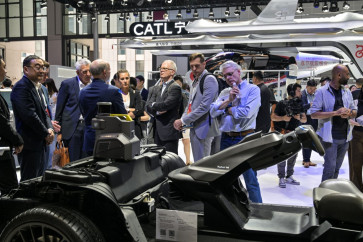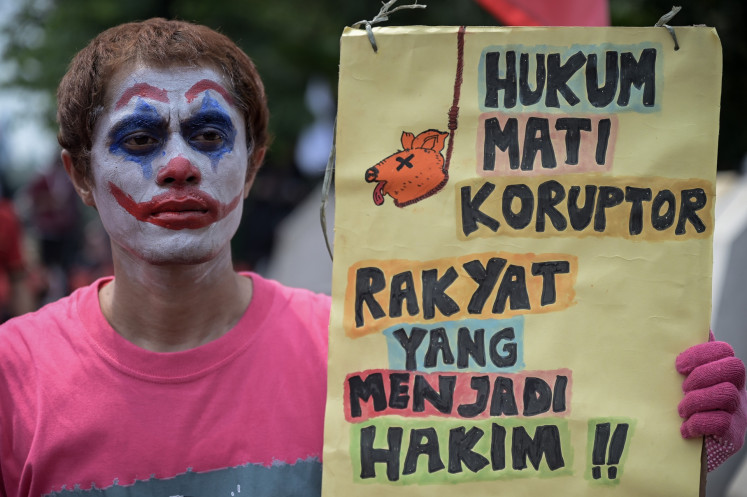Popular Reads
Top Results
Can't find what you're looking for?
View all search resultsPopular Reads
Top Results
Can't find what you're looking for?
View all search resultsConsumption to boost fuel subsidy despite oil price decline: Official
Increased consumption will likely lead to a continued high price tag for government fuel subsidies, despite declining crude oil prices in the first quarter, a senior official has said
Change text size
Gift Premium Articles
to Anyone
I
ncreased consumption will likely lead to a continued high price tag for government fuel subsidies, despite declining crude oil prices in the first quarter, a senior official has said.
“While declining oil prices may lower the subsidy paid per liter of subsidized fuel, in total, it [the subsidy] will be larger than the 2013 state budget assumption, amid the rise in the consumption,” Deputy Energy and Mineral Resources Minister Susilo Siswoutomo said on Friday in a text message.
Susilo was commenting on the nation’s average oil price, the Indonesian Crude Price (ICP), which was US$107.42 per barrel in March, down 7 percent from $114.86 per barrel in February.
The Energy and Mineral Resources Ministry said on Tuesday the fall was caused in part by the decline in the price of Sumatra Light Crude (SLC) to $110.33 per barrel in March, down 7 percent from a month earlier.
Sumatra Light Crude is produced at the Minas field in Riau, the nation’s largest oil block by output.
While the ICP for March was still 11 percent higher than the 2013 state budget assumption of $100 per barrel, the declining trend may continue, according to Susilo.
However, he added, the nation’s fuel consumption continued to increase, and that would continue to have a deleterious effect on the 2013 state budget as a whole.
In the first three months of this year, subsidized fuel — including consumption of subsidized octane 88 fuel Premium gasoline, was sold for Rp 4,500 (49 US cents) a liter, or at half of the actual market price.
Subsidized fuel consumption was 10.47 million kiloliters in the first quarter, according to data from the state oil and gas company Pertamina.
Actual subsidized fuel distribution for the three-month period, according to Pertamina spokesman Ali Mundakir, was 6 percent higher than the original quota.
The government previously predicted that consumption might reach 50 million kiloliters in 2013, which would exceed the original quota of 45.1 million kiloliters.
In 2012, total subsidized fuel consumption hit 45.27 million kiloliters, which was 8 percent higher than the 41.7 million kiloliters used in 2011.
As previously reported, the government and the House of Representatives agreed last year to allocate Rp 272.4 trillion for energy subsidies this year.
The figure is higher than the actual 2013 energy subsidy of Rp 309.78 trillion stipulated last year.
The 2012 energy subsidy exceeded its original allocation by at least Rp 100 trillion from Rp 202 trillion.
Susilo said that the prospect of a continued high subsidy has led the government to again ponder introducing a ban on subsidized fuel use by private vehicles as well as developing and applying technology to limit consumption.
The official said that policy changes might be implemented in June, declining to elaborate further.
Lawmakers have continued to hesitate to approve government proposals to ban private vehicles from using subsidized fuel amid public protests that have at time turned violent.
Indonesia, which has the largest economy in Southeast Asia, previously held the region’s only seat on the Organization of the Petroleum Exporting Countries (OPEC) before it became a net importer of oil and its refined products,
Last year, the government tried to increase the price of the subsidized fuel price to curb the subsidy but it was rejected by the lawmakers amid a series of protests across the country.










